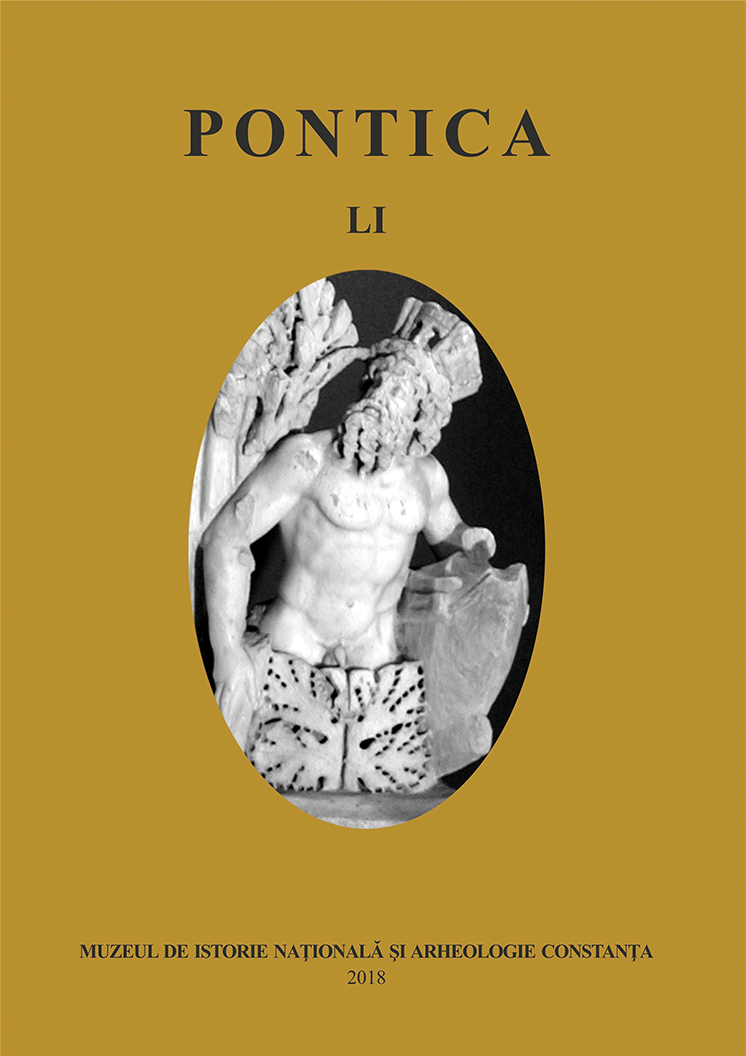Începuturile cercetării arheologice la Capidava. Documente inedite
The Beginings of Archaeological Research at Capidava. Unpublished Documents
Author(s): Ioan Carol OprișSubject(s): History, Anthropology, Social Sciences, Archaeology, Local History / Microhistory, Ancient World
Published by: Muzeul de Istorie Națională și Arheologie Constanța
Keywords: Kale-köy/ Calachioi; Capidava; stone quarry; Vasile Pârvan; Pamfil Polonic; Grigore Florescu; National Museum of Antiquities; Historical Monuments Commission; toponymy; epigraphy; cartography; 1924;
Summary/Abstract: The article presents the Modern historical and cartographic sourcesrediscovering Capidava – both the toponym and the description of the surviving ruins of acastellum built on the Danube limes as early as the Trajan's war against the Dacians inearly 2nd century Fallen into oblivion after its definitive abandonment by the middle of the11th century, the site gradually reverted to public attention after the Romanian War ofIndependence 1877-1878 and was subsequently repopulated with colonists coming from theRomanian Plain across the Danube. Topalu and Calachioi gain notoriety after 1884 and inthe first two decades of the 20th century. for their stone quarries, which also damaged thelimestone massif with the ancient fort in Capidava guarding the local ford of the Danube.Our paper offers a methodic review of the first Modern scientific mentions ofCapidava, which we owe to Marin Ionescu-Dobrogianu (1904), Grigore Tocilescu (1894-1903), Jakob Weiss (1911), Vasile Pârvan and Pamfil Polonic (1912). Cartographicsources are also mentioned, namely Charta României Meridionale/ Map of SouthernRomania (1864), or the local drawing of the Romanian Army's ”Planurile Directoare deTragere” drafted under 1: 20000 scale after World War I.During an archaeological survey undertaken in 1912, Vasile Pârvan identified thefortress of Capidava, and Pamfil Polonic sketched the first ground plan of the ruins. Thefollowing year the stone quarry that partially destroyed the fortress was stopped, and themonument could be subsequently placed under the protection of the Commission onHistorical Monuments. After a new dramatic moment threatening its state ofconservation in 1922, the systematic research of the ancient Capidava was finallyauthorized by the end of July 1924. This happened under the supervision of GrigoreFlorescu, assistant at the National Museum of Antiquities and a close disciple of VasilePârvan. Several little known or entirely new documents are presented: the first twoexcavation permits dating from 1924 and 1928, published now for the first time, themanuscripts of Pamfil Polonic kept by the Romanian Academy, official correspondence,plans and photos coming from public and private collections. All mentioned pieces ofinformation contribute at sketching an overview of the preliminary conditions, reasonsand backgrounds of the systematic excavations at Capidava. Started off in 1924, and verymodern for its time, the Capidava project kept on bringing added value and occasionally paradigmatic contributions to this very day to the archaeology of the Lower Danube Limesin Dobruja.
Journal: Pontica
- Issue Year: 2018
- Issue No: 51
- Page Range: 59-80
- Page Count: 22
- Language: Romanian

